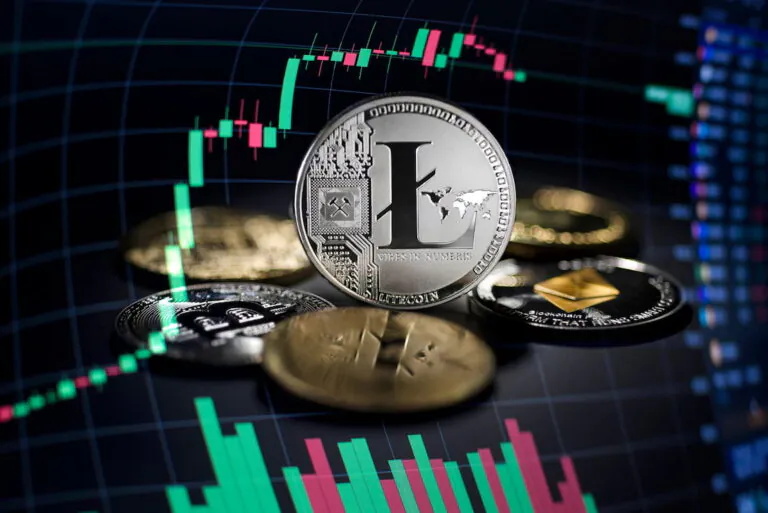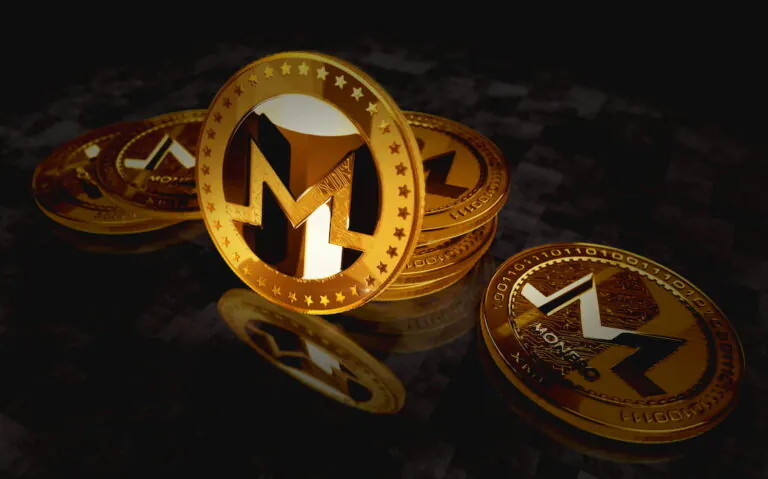Litecoin is one of the first open-source altcoins based on the original Bitcoin code. It was initially a strong competitor to the first cryptocurrency. However, as the cryptocurrency market expanded, Litecoin’s popularity gradually declined.

Decentralized Filecoin data storage network. FIL Token
What is FileCoin?
The FIL cryptocurrency is the base token that supports the Filecoin network. It is used to pay for data storage, data retrieval, and any other transactions that may occur on the network. Since this network does not depend on a centralized server, the data stored in the blockchain cannot be subject to hacker attacks (unlike centralized storage providers). In addition, no government or other body will have the right to censor file sharing.
Since all files are split into smaller parts by the Filecoin blockchain before being sent to miners for storage, the security of the content is guaranteed.
The Filecoin network is created on top of the Interplanetary File System (IPFS), which is a protocol for storing and sharing files over a distributed network (in a process very similar to file sharing networks like BitTorrent). While IPFS is free to use and does not generate income for miners, the Filecoin network is paid on a per-use basis and generates income. To provide data storage and retrieval on the network, Filecoin miners rent out unused storage space to clients and are paid in FIL.
FIL Token
- Token Name: Filecoin
- Ticker: FIL
- Blockchain: Filecoin
- Total offer: 280 502 938 FIL
- Maximum offer: currently unknown
- Market capitalization (16/09/2022): $1,623,509,208
- Daily trading volume (16/09/2022): $201,749,336
- FIL rate (16/09/2022): $5.75
FIL tokens were distributed as follows:
- 20% – Founders & Project
- 10% – Investors
- 70% – Pre-Rewards & Airdrops
The history of the creation of Filecoin
Behind the development of Filecoin is Juan Benet, who created with his team Protocol Labs, the interplanetary file system (IPFS) and libp2p, which aim to replace existing Internet protocols. Juan Benet is not just a programmer, but also a scientist, he received his education at Stanford University. The Filecoin project was first described back in 2014 as an incentive layer for IPFS.
The Filecoin white paper was finally released in 2017 as a decentralized storage solution. From its initial coin offering (ICO) plus venture funding, making it one of the largest token sales in the history of cryptocurrencies, Filecoin received $257 million, with the first $150 million raised in less than an hour. Prior to this, 200 million FIL from 150 different investors were sold before the launch of the project, and these tokens were sold at a half discount, which caused criticism from the public; especially considering that only those who made at least $200,000 a year were given access to the discounted sale, with the remaining $300 million sold to the general public were sold at full price.
It is important to note that no one received FIL until the mainnet launch in Fall 2020, and then all pre-sold FILs began to be distributed on a linear schedule. Less than a month after the successful mainnet launch, Filecoin has reached a milestone. The network transferred 1.1 million TB (terabytes) of storage capacity. According to reports, the network can store 4,500 sites like Wikipedia, 290 million 1080p quality movies and 19 copies of the entire Internet Archive.
Benefits of using Filecoin
- Complete decentralization
- Filecoin offers distribution of data on the network, which establishes network storage, as well as mechanisms related to data retrieval.
- Great use case
- Strong market position
- InterPlanetary File System Protocol
- Cheaper than Amazon Web Services or Google Cloud
Disadvantages of Filecoin
- Low speed
- Lack of interest, especially towards large investors
- There are great difficulties in obtaining profitability
- Questionable ICO
- Half of the offer will be released within the next 6 years
How does Filecoin work?
Filecoin works similarly to the IPFS network, allowing users to share and store data without any incentive model. Clients pay miners for storing their file, both the miner and the client make a deal, and then the miner undertakes to store the file and makes it publicly available on the blockchain. Filecoin then encrypts the data, splits it into chunks, and places it on the network. There is a constant verification mechanism in place to check if the miners are doing what is expected of them. Filecoin verifies data stored for a set period of time using Proof of Replication (PoRep) and Proof of Space-Time (PoST) mechanisms. Random miners are chosen to prove that random data is still being stored. When extracting a file, clients will have to pay miners to complete the request.
Decentralized Storage Network (DSN)
The DSN scheme is one of the concepts introduced by Filecoin that allows independent storage providers to offer storage space and search services with an incentive model. The Filecoin Storage Network uses verifiable markets (storage and retrieval markets) to ensure that storage providers are paid for providing a storage or retrieval service for a customer.
DNS collects storage offered by several independent vendors and coordinates without the help of external organizations to provide data storage and retrieval for customers.
Mining on Filecoin
When used in the Filecoin ecosystem, the term "mining" is different from what is common in other blockchains. Typically, Proof-of-Work blockchain miners are responsible for verifying transactions and securing the network. In contrast, the miners on the Filecoin network are responsible for storing, providing content, and issuing new blocks. Filecoin miners will need to provide storage capacity to customers who need disk space to store their data.
There are 2 types of miners in the Filecoin network, each of which performs a specific function. Currently, storage miners and extract miners play a crucial role in the network. The team also plans to introduce repair miners over time.
Storage miners are the heart of the network. They are responsible for two main responsibilities: storing data for clients, earning File Coin (FIL), and computing cryptographic proofs to verify storage over time. Unlike other blockchains where revenue is dependent on computing power, Filecoin miners receive block rewards and transaction fees proportional to the amount of storage they contribute to the network.
Storage miners are the heart of the network. They are responsible for two main responsibilities: storing data for clients, earning a file coin (FIL), and computing cryptographic proofs to verify storage over time. Unlike other blockchains, where revenue depends on computing power, Filecoin miners receive a block reward and a transaction fee proportional to the amount of storage they contribute to the network.
Each miner in the Filecoin network is assigned a power value, and it is proportional to the storage capacity that the miner contributes to the network. A better power value increases the chances that a miner will be selected to mine a block in each epoch. And when mining blocks, miners receive a reward for the block and a commission for transactions and messages included in the base block.
How to buy and where to store Filecoin (FIL)?
Filecoin is available on most major cryptocurrency exchanges such as Binance, Crypto.com, Coinbase, Kraken, and more. This allows Filecoin to be used not only to buy storage space, but also as a tradable cryptocurrency. In addition to exchanges, Filecoin can be bought, sold or exchanged on cryptocurrency exchanges, for example, on our website.
Filecoin recommends three different wallets for storing its FIL cryptocurrency: Lotus, Glif Wallet and Filfox.
Why Use Filecoin Storage Network?
On the part of storage providers, they have a way to monetize their free disk space by making deals, saving data and in return receiving a reward in FIL tokens. The system was designed to reward miners in proportion to their storage capacity. The more storage you add to the network, the more Filecoin you will earn.
FIL Price Forecast
The highest point of the Filecoin rate was reached at the end of March 2021, when the mark was at $191.36, but soon the price of the coin began to fall sharply. Filecoin is currently trading at $5.9. Well, a very big change in the course in just a year and a half, but many experts are confident in its near-term growth. Here are the opinions of some of them:
- Trading Beasts says that by the end of 2022 the FIL rate will be $22.32, and in the next 5 years it will fluctuate in the range of $22-38.43.
- Wallet Investor is skeptical about the coin, predicting a fall in the course to $1.28 during the year.
- Digital Coin Price is confident that in the next five years, the Filecoin rate will be able to exceed $38.43.
- GOV Capital is determined, saying it could hit $244.79 in 2022
- The Reddit Community says that by 2025 the exchange rate will be $42.
Prospects for the development of the Filecoin project
Filecoin is widely known for its decentralized cloud storage market and is hard at work, which can be seen on their GitHub page. With a significant increase in the number of miners at various levels, from large data centers to individuals with free disk space, Filecoin is poised to democratize and decentralize the way data is stored online through its miners.
The launch of its main web has integrated some web 2.0 based applications that now function as web 3.0 applications. Starling is one of the few projects currently under development working on using the Filecoin network to store information for long-term storage. Over time, a wide range of applications will use the Filecoin network for their cloud storage needs.


